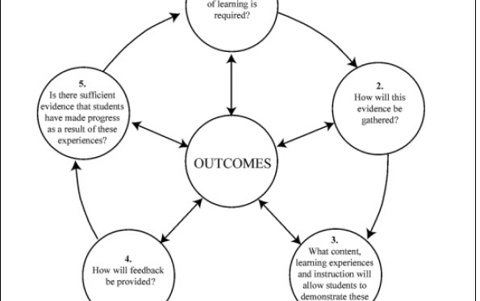Advice on programming and assessment

About this assessment task
This NSW Board of Studies resource is designed to help teachers understand key aspects of information and software technology.
Year band: 7-8, 9-10
AssessmentAssessment
By the end of Year 8, students:
- develop and modify creative digital solutions, decompose real-world problems, and evaluate alternative solutions against user stories and design criteria. Students acquire, interpret and model data with spreadsheets and represent data with integers and binary. They design and trace algorithms and implement them in a general-purpose programming language. Students select appropriate hardware for particular tasks, explain how data is transmitted and secured in networks, and identify cyber security threats. They select and use a range of digital tools efficiently and responsibly to create, locate and share content; and to plan, collaborate on and manage projects. Students manage their digital footprint.
By the end of Year 10, students:
- develop and modify innovative digital solutions, decompose real-world problems, and critically evaluate alternative solutions against stakeholder elicited user stories. Students acquire, interpret and model complex data with databases and represent documents as content, structure and presentation. They design and validate algorithms and implement them, including in an object-oriented programming language. Students explain how digital systems manage, control and secure access to data; and model cyber security threats and explore a vulnerability. They use advanced features of digital tools to create interactive content, and to plan, collaborate on, and manage agile projects. Students apply privacy principles to manage digital footprints.
Assessment
Description
This document contains a description of a process for designing assessment. It incorporates two sample units of work at Stage 5: database design project, and digital media project. The document has been provided by the NSW Board of Studies as part of their resource provision for information and software technology (7–10).
This resource is designed to help teachers understand key aspects of information and software technology, which has substantial overlap with the content and requirements of digital technologies, specifically in the areas of:
- discussion of data requirements and data types
- digital systems and information systems
- legal and ethical issues
- impact of technologies on society
- user interface design
- collaboration and group work.
The document provides advice on how to construct a program of study that covers the scope of information and software technology, including a scope and sequence description, a process for planning and sequencing units of work, and for developing learning and teaching activities. The exemplar, database design project, provides insights that are relevant and informative for future digital technologies assessments.
Additional details
This resource describes an assessment framework based on a model that integrates learning and assessment, presented first as a generic model, and then through examples relevant to information and software technology (specifically of interest, database design project).
The document describes the assessment for learning framework in a generic sense, before proceeding with detailed, annotated examples of its application. Of particular interest is the application to database design, which forms an informative basis for application of the framework to future digital technologies assessments.
Guidance for use
This is a demonstration of the application of the Assessment for learning framework in a computational context. It can be used as a guide for developing further assessments specific to digital technologies.